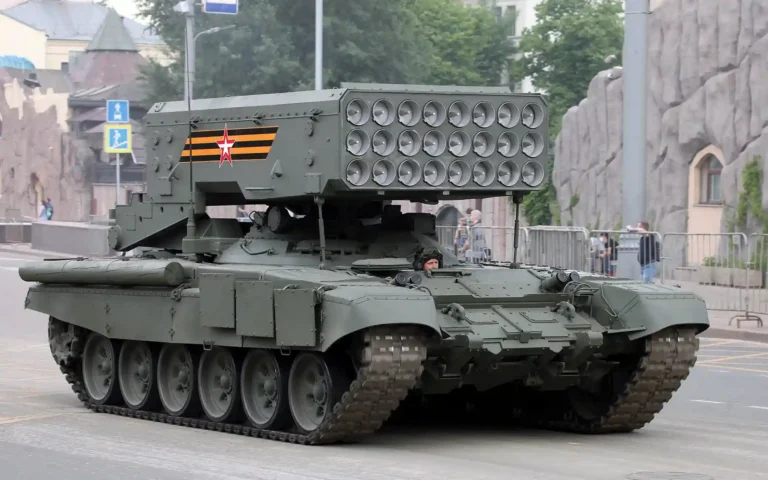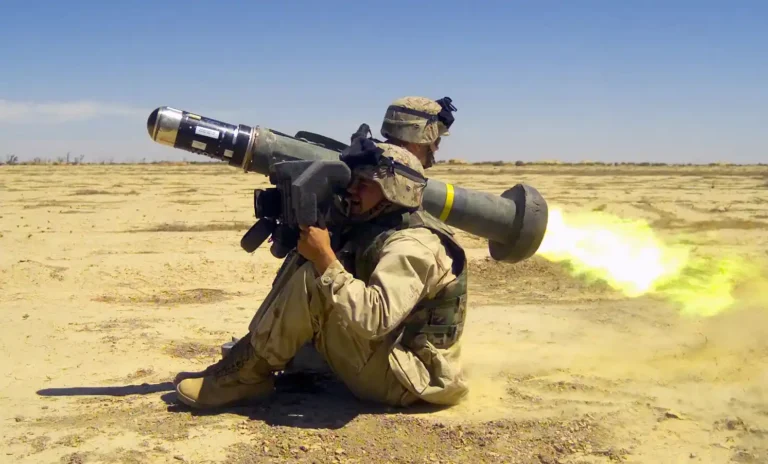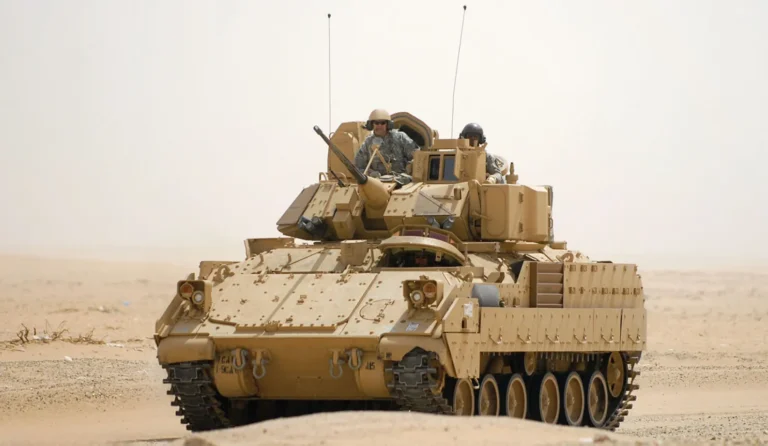Follow Us:
Share
Table of Contents:
In recent years, the Zala Lancet drone has gained significant attention due to its use in modern military conflicts, especially by the Russian military. Developed by the Russian company Zala Aero, the Zala drone is a loitering munition, also known as a kamikaze drone, designed to perform precision strikes on a wide range of military targets.
This guide will delve deeply into the specifications, capabilities, and operational features of the Zala Lancet UAV drone, providing a thorough overview of this powerful military tool.
What is the Zala Lancet Drone?
The Zala Lancet drone is a Russian-developed loitering munition that has become an essential tool in modern warfare. It combines advanced reconnaissance capabilities with precision strikes, making it a highly versatile weapon on the battlefield.
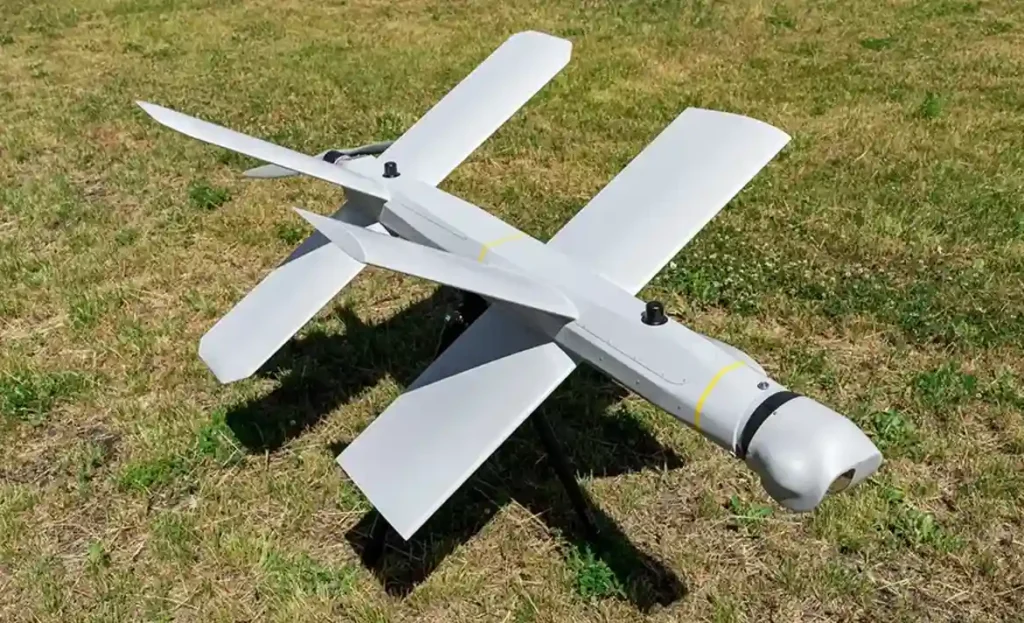
Officially classified as a “kamikaze” or suicide drone, the Lancet uav is designed to loiter over a designated area until it identifies a target.
Once the target is in sight, the drone dives towards it, detonating upon impact, delivering significant damage with high precision.
The Role of Zala Aero Company in Drone Development
The Zala Lancet drone is developed by Zala Aero, a subsidiary of the Kalashnikov Group, which is a major manufacturer of Russian defense technology.
Zala Aero specializes in the development of unmanned aerial vehicles (UAVs), surveillance systems, and related technologies.
Zala Aero has positioned itself as a leader in the UAV sector within Russia, and its development of the Zala drone solidifies its role in creating advanced, autonomous weaponry.
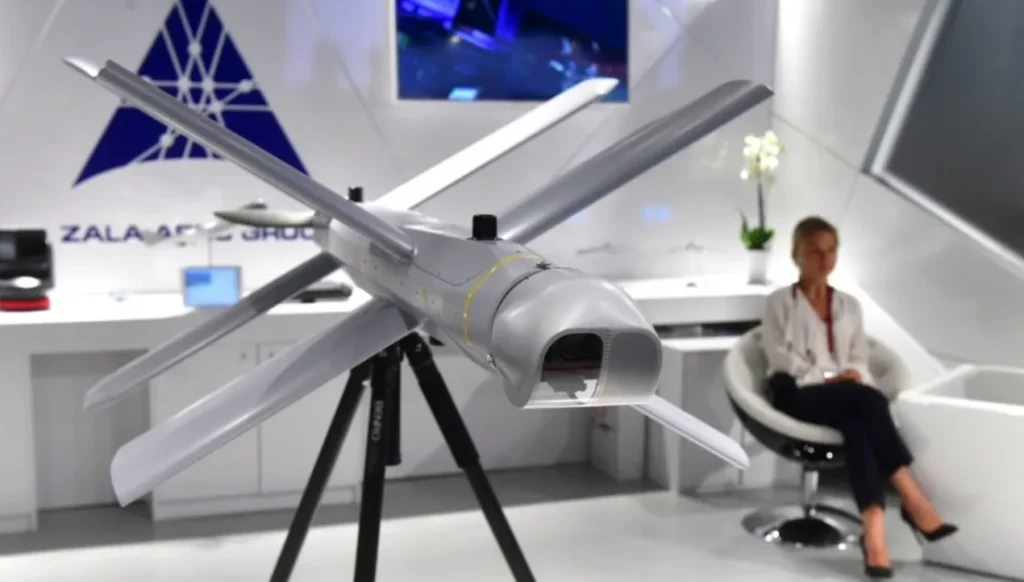
The company has also developed other well-known drones like the Zala 421-16E2 and the Zala 421-08, primarily focused on surveillance.
However, the Russian Lancet drone has garnered more attention due to its military capabilities, particularly its precision strike capabilities.
The focus on kamikaze drones like the Zala Lancet stems from the need for effective loitering munitions in modern warfare.
These drones provide a tactical advantage by eliminating the need for long-range missiles or manned aircraft for small, high-value targets.
Zala Lancet Drone Specifications and Capabilities
The Zala Lancet drone has been specifically designed to fulfill a tactical role in modern warfare, allowing for precision strikes while loitering over battlefields. Its advanced features make it a formidable weapon in military operations.
Let’s take a closer look at its specifications, capabilities, and operational features that set it apart from other drones in its class.
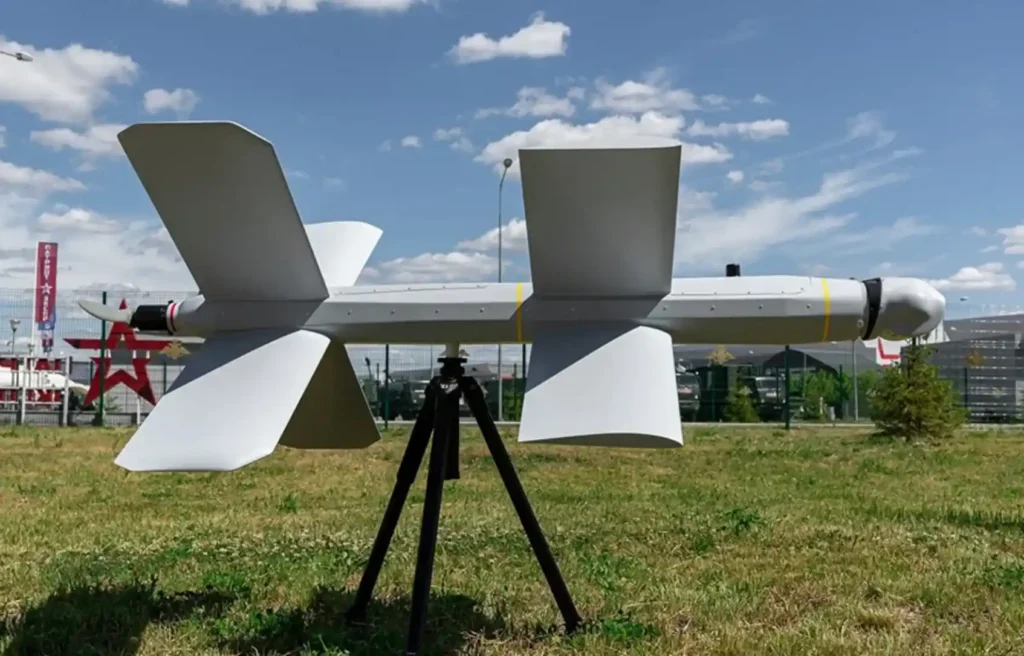
Key Specifications of the Zala Lancet Drone
The Zala Lancet comes equipped with a range of specifications that give it an edge in terms of performance, endurance, and precision. Below are some of the most important specifications of the drone:
| Specification | Details |
| Weight | 12 kg (26.4 lbs) |
| Length | 1.65 meters (5.4 feet) |
| Wingspan | 1.2 meters (3.9 feet) |
| Payload | 3 kg (6.6 lbs) |
| Maximum Range | 40 km (24.8 miles) |
| Maximum Speed | 110 km/h (68 mph) |
| Endurance/Flight Time | 30-40 minutes |
| Warhead Type | Explosive (fragmentation or HEAT – high explosive anti-tank) |
| Guidance System | Electro-optical and autonomous navigation |
These specifications highlight the Zala drone’s versatility and adaptability in various combat scenarios. Its lightweight design combined with a decent payload makes it effective for a range of strike missions, particularly targeting small, high-value military assets.
Zala Lancet Drone Range and Operational Features
The Zala Lancet drone has an operational range of approximately 40 kilometers, making it ideal for tactical operations where precision strikes are required at short to medium distances.
It boasts an endurance of 30 to 40 minutes, giving it ample time to loiter in the target area before identifying and striking its target.

Autonomous Flight Features
One of the standout capabilities of the Zala Lancet is its autonomous flight functionality.
While it can be controlled remotely, the drone is equipped with advanced autonomous navigation systems, allowing it to execute missions with minimal human intervention.
The drone can be pre-programmed to search for specific targets, reducing the workload for operators and improving the overall efficiency of military operations.
Targeting System and Precision Strike
The Zala Lancet’s targeting system relies on electro-optical sensors, allowing the drone to detect and lock onto targets with high precision.
This targeting system, combined with its ability to loiter over an area, makes the Lancet highly accurate when it comes to engaging targets.
Once a target is identified, the drone can dive onto the target, delivering its explosive payload directly to the point of impact.
This precision is particularly useful in targeting armored vehicles, artillery positions, and enemy personnel.
Zala Lancet Drone Accuracy and Precision
The accuracy of the Zala Lancet drone is one of its most important features. Its ability to carry out precision strikes makes it a reliable tool in modern warfare.
The drone’s targeting systems and autonomous flight capabilities ensure that it can engage moving or stationary targets with minimal risk of error.
- Anti-tank Capabilities: The drone is especially effective in targeting armored vehicles like tanks, using high-explosive anti-tank (HEAT) warheads designed to penetrate armor.
- Precision Strike Examples: In recent conflicts, such as those in Ukraine and Syria, the Zala Lancet has been used to eliminate critical assets like radar stations, artillery systems, and enemy command centers.
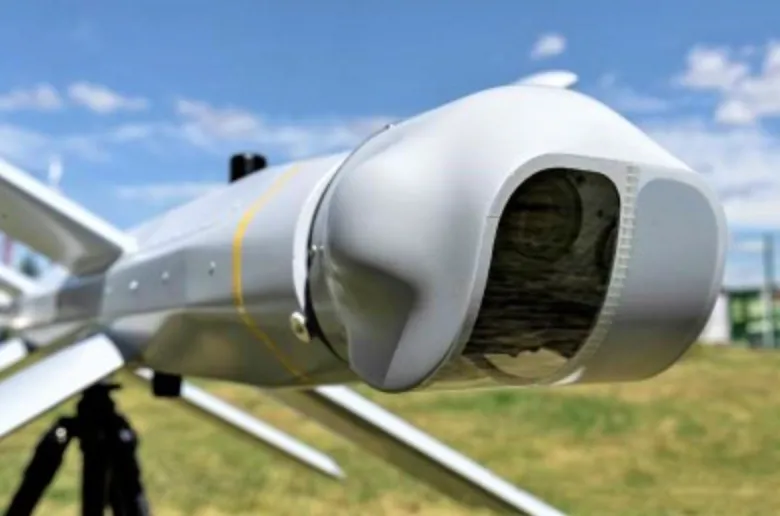
Its high accuracy, combined with the kamikaze nature of the drone, allows it to neutralize high-value targets without exposing operators to the battlefield.
Zala Lancet Drone in Military Use and Conflict Zones
The Zala Lancet drone has become a critical component of Russian military operations, especially in modern conflict zones.
Its combination of loitering capabilities and precision strikes makes it particularly effective for targeting high-value military assets in real time.
This section will explore how the drone is deployed, its use in conflicts like the Ukrainian war, and its psychological and tactical impact on modern warfare.
Russian Kamikaze Drone: Zala Lancet in Action
The Zala Lancet drone has seen widespread use in various military operations, most notably by the Russian military.
Its ability to loiter over a designated area and execute high-precision strikes without requiring constant guidance makes it a powerful tool on the battlefield.
Russian forces have utilized the drone to target a range of military assets, including:
- Artillery systems
- Armored vehicles
- Radar and air defense systems
- Enemy personnel in fortified positions
Its use in these operations highlights the flexibility and effectiveness of the Zala Lancet as a kamikaze drone capable of delivering significant damage with minimal human intervention.
The use of kamikaze drones like the Zala Lancet has introduced a new psychological dimension to warfare.
Knowing that a drone is hovering above, waiting to strike, can cause anxiety and disrupt enemy operations. The element of surprise and uncertainty is a critical advantage in psychological warfare.
Quotes from military analysts have highlighted how the presence of these drones affects enemy troop morale, causing hesitancy in moving freely or setting up key defense systems.
Zala Lancet Drone Payload and Weaponry
One of the most critical aspects of the Russian Lancet drone is its payload capability, which allows it to deliver precise and devastating strikes on a variety of targets.
In military operations, the ability to tailor payloads for different mission requirements makes the Zala Lancet a versatile weapon in the Russian arsenal.
This section explores the payload capacity of the drone, its anti-tank capabilities, and the types of warheads it carries.
Payload Capabilities of the Zala Lancet Drone
The Zala Lancet drone is designed to carry a payload of up to 3 kilograms (6.6 lbs), which is relatively light but highly effective for the types of missions it undertakes.
The payload usually consists of an explosive warhead that can be optimized for different targets.
Here are some of the typical payload options for the Zala Lancet:
- High Explosive (HE) Warheads: Designed for general-purpose use, these warheads cause significant fragmentation and blast damage, making them effective against personnel, lightly armored vehicles, and equipment.
- High Explosive Anti-Tank (HEAT) Warheads: These are specifically designed to penetrate armored vehicles such as tanks. The HEAT payload is capable of piercing thick armor, making the Zala Lancet a threat to even well-fortified targets.
Despite its relatively small size, the Lancet’s payload is optimized for precision strikes. It allows the drone to focus on neutralizing specific high-value targets without causing unnecessary collateral damage.
This precision makes the Zala Lancet drone particularly useful in urban combat zones or close-quarter battlefield conditions where minimizing civilian casualties is crucial.
Zala Lancet Anti-Tank Capabilities
One of the standout features of the Russian Lancet drone is its ability to function as an anti-tank weapon.
Traditionally, armored vehicles and tanks have been challenging to eliminate, often requiring large and costly munitions or dedicated anti-tank systems.
However, the Zala Lancet changes that by providing a smaller, more mobile solution capable of striking tanks and other armored targets with high precision.
The Russian Lancet drone utilizes its electro-optical guidance system to lock onto armored vehicles, specifically focusing on vulnerable areas such as the top of the turret or engine compartment, where the armor is typically thinner.
Once locked on, the drone executes a kamikaze dive towards the target, delivering its payload with lethal accuracy.
Zala Lancet Drone Control System and Technology
The technological backbone of the Zala Lancet drone is its advanced control system, which enables it to carry out complex missions with both precision and autonomy.
A highly efficient combination of remote operation and autonomous flight capabilities allows the Lancet drone to loiter over target areas, identify threats, and strike with pinpoint accuracy.
In this section, we’ll explore the details of the drone’s control system, its autonomous flight technology, and the stealth features that make it difficult for enemies to detect and counter.
How the Zala Lancet Drone is Controlled
The Zala Lancet drone can be operated in both manual and autonomous modes, depending on the mission requirements.
This dual-control capability makes it versatile for different types of military operations, whether it requires real-time human intervention or pre-programmed autonomy.
- Manual Operation:
- In manual mode, the drone is controlled remotely by an operator who can guide it towards specific targets. This is typically done via a ground control station, where the operator uses a joystick and visual feedback from the drone’s onboard cameras to navigate and strike the target.
- Autonomous Operation:
- The Zala Lancet is also capable of fully autonomous flight, allowing it to execute missions without the need for constant operator input. In this mode, the drone follows pre-programmed instructions, navigating based on GPS coordinates and its onboard sensors.
- Autonomous operation is particularly useful in situations where communication signals may be jammed or when stealth is required, as the drone can continue its mission without needing constant remote guidance.
- Hybrid Mode:
- In many operations, the Zala Lancet operates in a hybrid mode, where it loiters autonomously over an area but allows an operator to take control when a target is detected. This combination of autonomy and human intervention ensures both flexibility and precision.
Zala Lancet Drone Stealth Technology
A key component of the Zala Lancet’s effectiveness is its ability to operate with a degree of stealth, making it difficult for enemy forces to detect and counter.
This stealth capability stems from a combination of design elements and operational techniques.
Low Radar Signature
The Zala Lancet has a low radar cross-section (RCS), meaning it is difficult to detect on standard radar systems.
Its compact size and composite materials contribute to this low radar signature, making it more challenging for traditional air defense systems to track.
- Compact design: The small size of the Lancet drone helps reduce its visibility on radar, giving it an advantage when operating in enemy-controlled airspace.
- Materials: The drone is constructed using radar-absorbing materials that further minimize its detectability.
Quiet Propulsion System
In addition to its low radar signature, the Zala Lancet uses a relatively quiet propulsion system, which reduces the noise it generates while in flight.
This quiet operation makes it harder for enemy forces to detect the drone audibly, especially in the midst of battlefield noise.
Operational Stealth Techniques
The stealth capabilities of the Zala Lancet drone are also enhanced by its operational tactics. For example:
- Low-altitude flight: The drone often flies at low altitudes during its loitering phase, making it less visible to radar systems and more difficult to shoot down using traditional anti-aircraft measures.
- Sudden dives: When it spots a target, the Lancet often makes a rapid descent from a higher altitude, minimizing the reaction time that enemy forces have to counter its approach.
Zala Lancet Drone Variants and Developments
The Zala Lancet drone has undergone several iterations and improvements since its initial deployment.
These variants offer different capabilities, payload capacities, and operational features, which allow the drone to be used in various mission profiles.
In this section, we will explore the different Zala Lancet variants and discuss the latest developments in its technology and future prospects.
Different Variants of the Zala Lancet Drone
The Russian Zala Lancet drone currently has two main variants, each designed to fulfill specific roles within military operations.
These variants differ primarily in size, payload capacity, and operational range, allowing military planners to choose the best option based on mission requirements.
1. Zala Lancet-1
The Zala Lancet-1 is the smaller variant of the two. It is designed for short-range missions and has a smaller payload capacity compared to its counterpart.
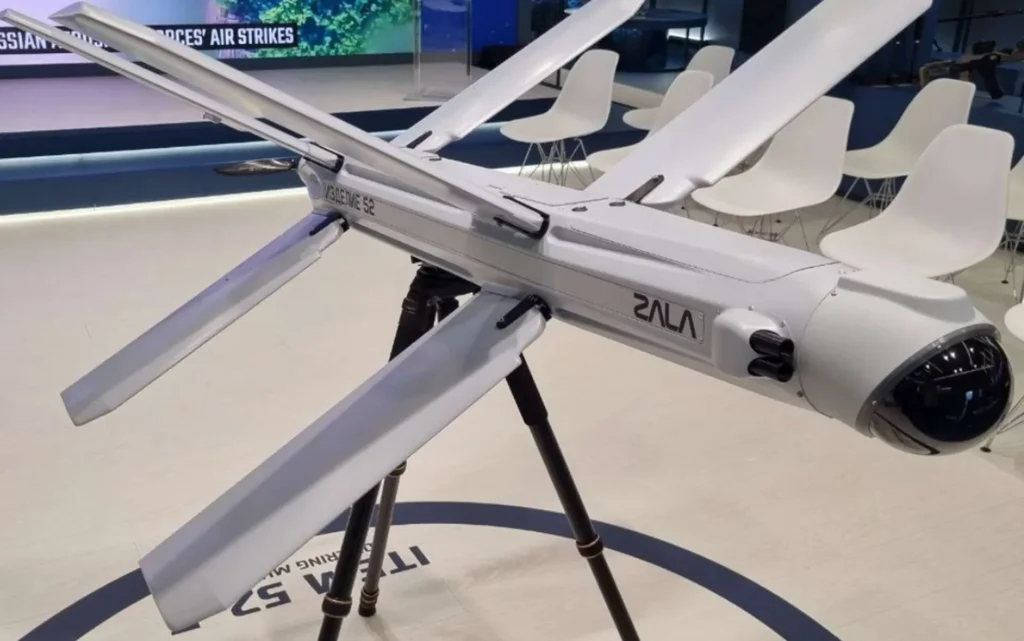
Despite its reduced size, the Lancet-1 still retains the key features that make the Zala Lancet line effective, such as precision targeting and autonomous flight capabilities.
- Payload: Approximately 1 kg (2.2 lbs)
- Range: 30 km (18.6 miles)
- Endurance: Around 30 minutes
- Use Case: Primarily used for targeting soft targets, such as unarmored vehicles and enemy personnel.
While the Lancet-1 may not have the same firepower as its larger sibling, it excels in missions that require rapid deployment and high maneuverability. Its smaller size also makes it harder to detect, adding an element of stealth to its operations.
2. Zala Lancet-3
The Zala Lancet 3 is the more advanced and heavier variant of the drone family. It has a significantly larger payload capacity and longer range, making it ideal for longer missions and heavier targets.
- Payload: Approximately 3 kg (6.6 lbs)
- Range: 40 km (24.8 miles)
- Endurance: Around 40 minutes
- Use Case: Capable of targeting armored vehicles, tanks, and reinforced positions.

Its anti-tank capabilities and effectiveness against hardened targets make it a preferred choice in urban combat environments.
The Lancet-3 is the version most commonly seen in conflict zones, where its ability to carry a larger payload and loiter for extended periods makes it a valuable asset for precision strikes on high-value military targets.
Latest Developments in Zala Lancet Drone Technology
As warfare evolves, so too does the technology behind drones like the Zala Lancet. In recent years, there have been several key developments in the drone’s design and functionality, making it more efficient and deadly in combat scenarios.
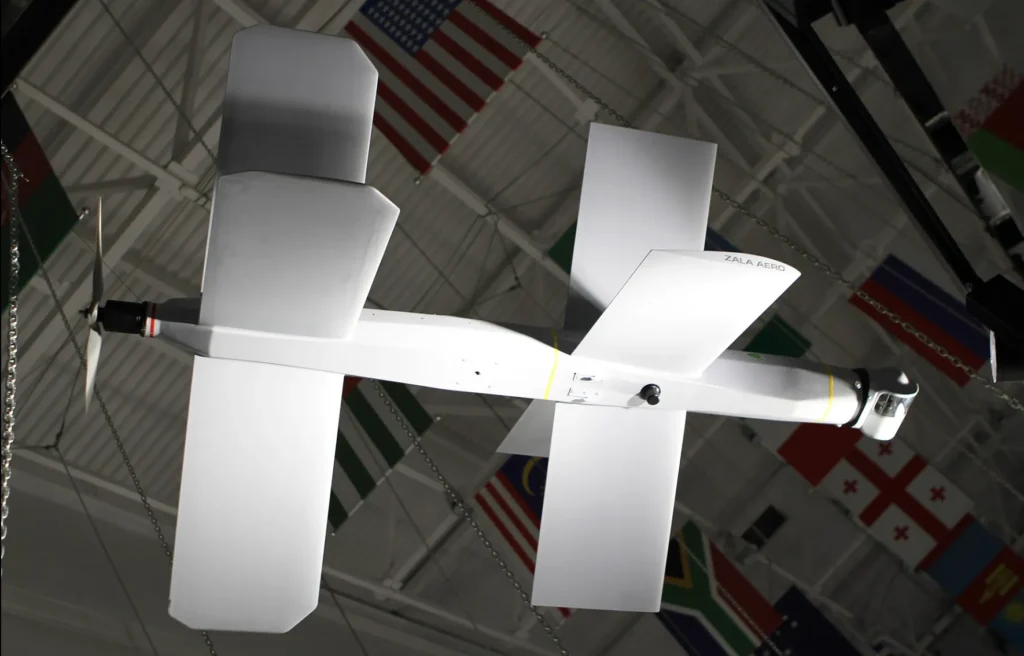
1. Enhanced Targeting and Guidance Systems
One of the most significant upgrades in the latest versions of the Zala Lancet drone is the improvement in its targeting and guidance systems.
Newer models feature multi-spectral sensors that allow the drone to identify and engage targets more accurately in a variety of weather conditions and environments.
- Electro-optical sensors: Improved optical sensors provide clearer visual feeds, enabling better target identification.
- Infrared guidance: Allows the drone to engage targets during nighttime operations or in low-visibility environments.
2. Improved Loitering Capabilities
The loitering time of the Zala Lancet has been extended in recent developments, allowing it to stay airborne for longer periods.
This improvement enhances its ability to conduct reconnaissance and identify targets over wider areas without the need for frequent refueling or re-launching.
- Extended flight time: Newer iterations of the drone are reported to have flight times of up to 60 minutes under optimal conditions, providing greater operational flexibility.
- Energy-efficient propulsion: Advances in the drone’s propulsion system have made it more energy-efficient, enabling longer missions with the same payload capacity.
3. Advanced Anti-Jamming Technology
Given the increasing use of electronic warfare in modern conflicts, the Zala Lancet has been outfitted with anti-jamming technology to prevent disruption during its missions.
This ensures that the drone can continue operating even in environments where enemy forces are using jamming devices to interfere with communications and GPS signals.
- GPS-independent navigation: The drone can continue its mission autonomously, relying on its onboard systems even if its GPS signal is jammed.
- Frequency hopping: This technology allows the drone to switch between different communication frequencies, making it harder for enemy forces to disrupt its control signals.
4. Integration with Other UAV Systems
In line with broader trends in network-centric warfare, the Zala Lancet is being integrated into a larger UAV ecosystem that allows it to coordinate with other drones and manned aircraft.
This integration enables joint operations where multiple drones can share information, improving the efficiency and effectiveness of military strikes.
- Swarm capabilities: There are ongoing developments to enable multiple Lancet drones to operate in a coordinated swarm, overwhelming enemy defenses by attacking simultaneously from different angles.
- Data-sharing: The drone can now relay real-time data to other military assets, allowing for quicker decision-making and more precise strikes.
Conclusion
The Zala Lancet drone represents a significant advancement in modern military technology, combining the capabilities of loitering munitions with precision strike functionality.
Its successful use in conflicts like those in Ukraine and Syria has highlighted its effectiveness in targeting high-value military assets while minimizing the need for larger, more complex systems.
The Russian Zala Lancet drone offers a unique combination of features that make it well-suited for modern combat scenarios. Some of its key strengths include:
- Precision Strike Capabilities: The drone’s advanced targeting system and ability to loiter over the battlefield allow it to engage high-value targets, including armored vehicles, artillery, and radar systems, with great accuracy.
- Autonomous Flight: Its autonomous navigation and loitering abilities enable it to perform missions with minimal operator involvement, reducing the risk to personnel and ensuring that it can operate in environments where communications may be disrupted.
- Versatility: With its multiple variants, the Zala Lancet can be deployed for different mission profiles, whether targeting tanks with HEAT warheads or engaging enemy personnel and light vehicles with fragmentation warheads.
- Stealth and Anti-Jamming Features: The drone’s low radar signature, quiet operation, and anti-jamming technology make it difficult to detect and neutralize, enhancing its survivability in contested environments.
- Cost-Effectiveness: Compared to traditional missiles or manned aircraft, the Zala Lancet provides a low-cost alternative for delivering precision strikes, making it an attractive option for military forces operating in budget-conscious environments.
Frequently Asked Questions (FAQs)
How far can the Zala Lancet drone range?
The Zala Lancet 3, the most common variant, has a range of approximately 40 km (24.8 miles), while the smaller Lancet-1 has a range of 30 km (18.6 miles).
What is the payload capacity of the Zala Lancet drone?
The Zala Lancet-3 can carry a payload of up to 3 kg (6.6 lbs), while the Lancet-1 can carry 1 kg (2.2 lbs). The payload typically consists of an explosive warhead designed for anti-armor or fragmentation strikes.
How does the Zala Lancet compare to other kamikaze drones?
The Zala Lancet is comparable to other loitering munitions like the Israeli Harop and the Switchblade 600 from the United States.
While it has a shorter range and smaller payload compared to some of its competitors, it is highly effective in short- to medium-range missions and offers a cost-effective solution for precision strikes.
Share
Defense Feeds
Defense Feeds is publication focusing on informing, engaging, and empowering the world by providing accurate information from defense technology.
Powered by Defense Feeds © 2025 – All rights reserved.


